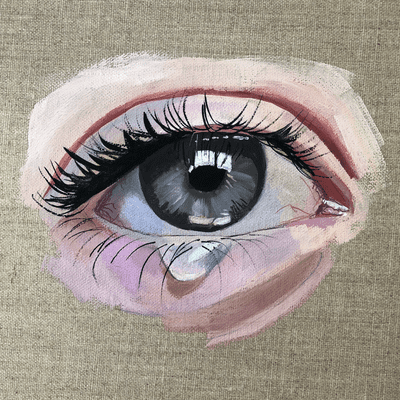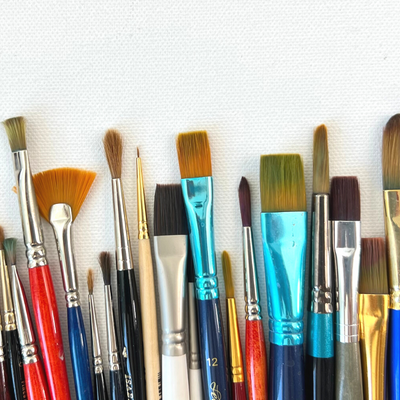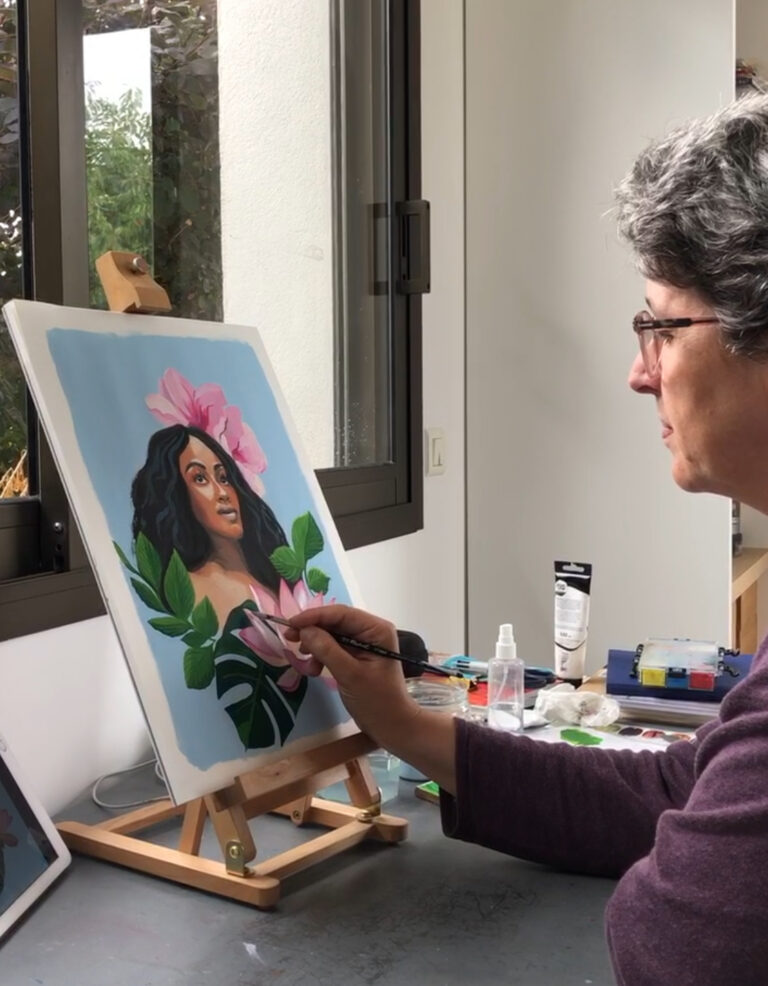The Best Surfaces for Gouache Painting
Gouache is a water-based paint that artists have used for centuries. It is characterized by its opacity and vibrant colors, making it a popular choice for illustrations, cartoons, and fine arts. You must select the proper surface to get the best effects with gouache. The substrate you work on can impact your paint’s texture, ultimate appearance, and drying time. This guide will help you decide which surface works best for your gouache painting.
Table of Contents
- Factors to Consider when Choosing Surface for Gouache:
- Surface Types for Gouache
- Pros and Cons of each surface for gouache
- Conclusion
Factors to Consider when Choosing Surface for Gouache:
When choosing a surface for gouache, there are several factors to consider. The surface can affect the outcome of your artwork, so it’s essential to make an informed decision. This section will examine four key factors you should consider when choosing a surface for gouache: Absorption rate, Surface texture, Compatibility with Gouache, and Personal preference.
Absorption rate
Absorption rate refers to how quickly or slowly a surface absorbs the paint. This can have a significant impact on the outcome of your artwork. If a surface absorbs the paint too quickly, it can cause the paint to dry too fast, making it difficult to blend colors or create smooth transitions. If a paper is too absorbent, prime it with a transparent gesso so the paint will sit on it instead of soaking inside it.
This absorption rate is important when painting outdoors, the outside temperature may dry your paint quickly, and if your paper absorbs too much of it, you won’t be able to blend. Make tries before painting in Plein air!
Surface Texture
Surface texture refers to the physical feel of the surface and can also have an impact on the final look of your artwork. Some surfaces are smooth and have a uniform texture, while others are rough and have a more textured feel. The type of surface you choose can affect how the paint adheres, dries, and the final look of your piece.
For example, a smooth surface may produce a flat, even appearance, while a rough surface may produce a more textured look, with the paint picking up the surface’s texture. This can be especially desirable for creating works with a more natural, organic feel.
In addition, the surface texture can also affect the ease of use of the paint. A rough surface may require more paint to fill in the surface, while a smooth surface will require less paint.

Compatibility with Gouache
Compatibility with gouache refers to the ability of the surface to work well with gouache paint. This includes how well the paint adheres to the surface, how it dries, and the final appearance of the piece. Some substrates may not be suitable for gouache, as the paint may not adhere well.
Slippery surfaces unsuitable for gouache are glass, metal, and plastics. You should use acrylic instead for this type of surface, and if you want to use gouache, use a primer before painting. You should also avoid raw fabric for gouache as the paint will soak inside without a primer, turning it into a canvas.
Personal Preference
Personal preference plays a significant role in choosing the suitable surface for gouache. Ultimately, your chosen surface should suit your artistic style and personal taste (and budget!).
Some artists prefer a smooth surface for their gouache paintings, as it provides a flat surface for clean, precise lines. Others prefer a rough surface, as it gives a more organic, textured feel that can add character and interest to the piece.
Consider your artistic preferences, the kind of artwork you intend to produce, and the materials with which you are most at ease when selecting a gouache surface. You may create the best artwork and enjoy the painting process by choosing a surface that fits your tastes.
Surface Types for Gouache
When choosing a surface for gouache, various options are available, each with its unique properties and characteristics. From paper to canvas to board and beyond, each surface type has its benefits and drawbacks, and choosing the right one for your artwork can make a big difference in the final result.
This section will explore some of the most popular surface types for gouache, including paper, canvas, board and cardboard, and wood.
Paper
- Hot-press watercolor paper: This is a popular choice for gouache because it has a smooth surface that’s easy to paint on and doesn’t absorb much paint. The hot-press paper also handles water well, so you can use watercolors or even spray mists with your gouache without the paper buckling or warping. Hot-press watercolor paper comes in various weights and sizes. I’m using 300 gsm (140 lb) Arches watercolor paper.

- Cold-press watercolor paper: This paper has a textured surface ideal for gouache. It holds more paint than hot-press paper, so be prepared to make larger batches of color! This surface is perfect for textured effects with a dry brush and thick paint.
- Rough paper has an extremely textured surface ideal for creating highly textured, impasto-style paintings. The rough surface allows for thick, textured brushstrokes, making it a good choice for impressionistic and expressionistic works.
- Newspaper: While not traditionally used for fine art, newspapers can create an exciting and unusual surface for gouache. The thin, lightweight paper provides a unique look, and the printed text can add interest and character to your artwork. To paint the newspaper, glue it on a hard surface like a board with transparent gesso or acrylic medium.
When choosing paper for gouache, consider the type of work you want to create and the appearance you want to achieve. Each type of paper has unique characteristics and benefits, so choose the one that best suits your artistic style and goals.
Canvas
Canvas is another popular surface type for gouache, as it provides a sturdy, durable surface that can be used for various styles and techniques. It is particularly well suited for thicker, impasto-style paintings, as the rough texture of the canvas provides a good base for building up layers of paint. Don’t go too thick, though, as gouache may crack! For thick, heavy impasto style, acrylic or oil painting are more suitable. Before painting, ensure your canvas is primed, or apply one or two layers of gesso. I’m using this gesso:

The canvas is also easy to frame and display, making it a good choice for finished pieces you plan to sell or display.

Board or cardboard
Board and cardboard are popular surface types for gouache, as they provide a sturdy, rigid surface that can be used for various styles and techniques. These surfaces are particularly well suited for flat, even paintings, as the smooth surface of the board or cardboard provides a good base for clean lines and precise details.
These surfaces are also relatively inexpensive, making them a good choice for artists working on a budget.

Wood
Wood is another surface type that can be used for gouache paintings, providing a unique and rustic look to your artwork. This surface type is particularly well suited for pictures with a natural, organic feel, as the texture and grain of the wood can add depth and character to your paintings.
When choosing wood for gouache, consider the type of wood you want to use and the finish you prefer. Some artists prefer a lighter-colored wood, such as birch, for their paintings, while others prefer a darker, more natural look, such as walnut or oak. Consider the thickness and size of the wood, as larger pieces may be more difficult to handle and require more paint.

Overall, wood is a unique and rustic surface type that can add depth and character to your gouache paintings. Whether creating a natural landscape or a still life, wood can provide the proper surface for your gouache paintings.
Depending on the wood quality, you may need to prime it before gouache painting. When in doubt, add a layer of transparent gesso.
Pros and Cons of each surface for gouache
| Surface Type | Best Suited For | Pros | Cons |
|---|---|---|---|
| Paper | Detailed, fine-lined paintings, all paintings | Widely available, inexpensive, versatile, available in different weights, easy to find | Can wrinkle, bleed through if not thick enough |
| Hot-pressed paper | Precise, smooth paintings | Flat, smooth surface | Can be expensive |
| Cold-pressed paper | Impressionistic, textured paintings | Rougher texture, good for layering | May have visible tooth or texture |
| Rough paper | Expressive, textured paintings, thick impasto paintings | Good for heavy layering, adds texture | It can be more expensive, needs to be primed |
| Newspaper | Experimentation, all paintings | Inexpensive and readily available | Requires a primer, not durable unless you varnish it |
| Canvas | Impressionistic, textured paintings, all paintings | Adds depth, texture, and dimension to paintings | It can be difficult to handle, can be heavy, needs to be primed, and can be expensive. |
| Board/Cardboard | Flat, even paintings, studies, all paintings | Sturdy, lightweight, easy to handle | They may have visible tooth or texture, may consume a lot of paint |
| Wood | Natural, organic paintings | Adds character, texture, and depth | It can be difficult to handle, can be heavy, needs to be primed, and can be expensive |
Note: The information in this table is a general guide and may vary depending on personal taste and budget
Conclusion
In conclusion, the surface you choose for your gouache paintings can significantly impact the final result. When selecting a surface, consider factors such as absorption rate, surface texture, gouache compatibility, and preference.
From paper to canvas, board, cardboard, and wood, there are a variety of different surface types that can be used for gouache paintings. Each surface type offers unique benefits and challenges, making considering your goals and preferences essential.
You can experiment; there are more surfaces to paint on with gouache!









